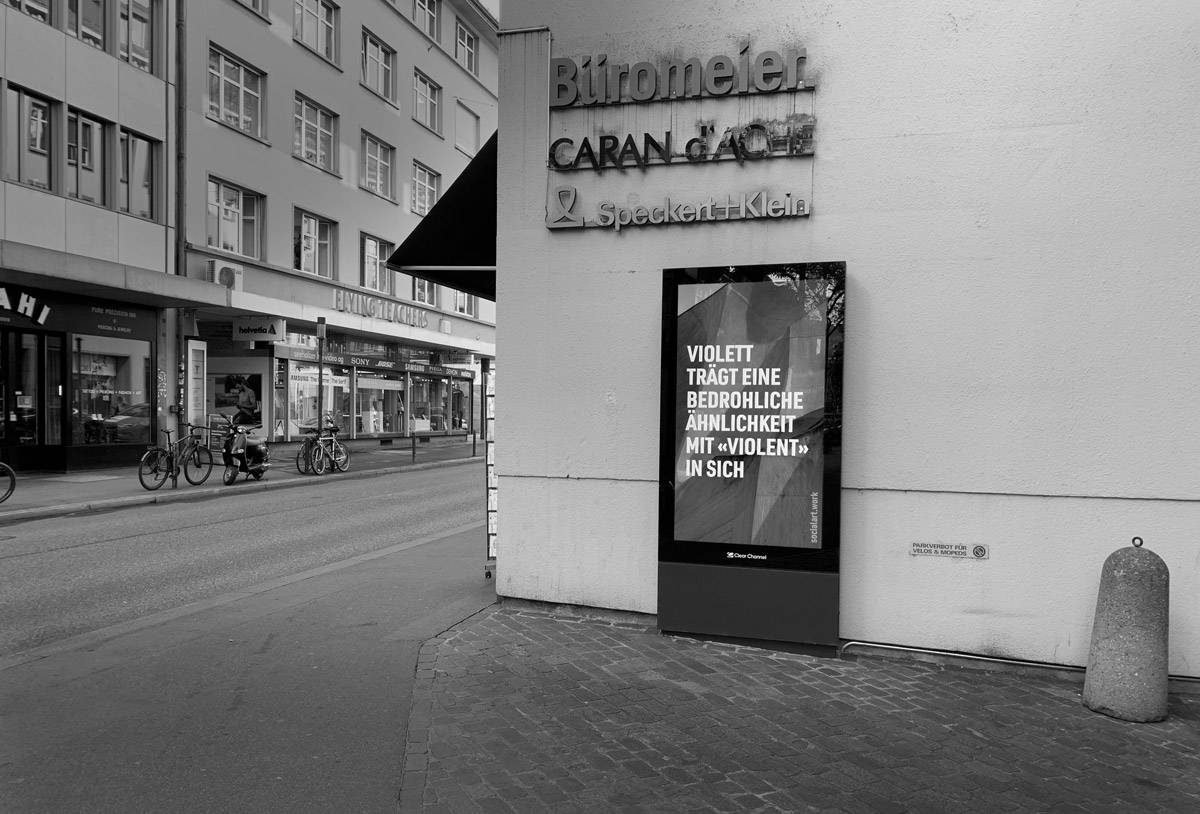We use the cookies _ga, _gat, _gid to collect anonymous data about how you use this site. OK.
Violett Trägt Eine Bedrohliche Ähnlichkeit Mit «Violent» In Sich, 2020
2020
Digital posters
7 of 7 from
die chromatika/the chromatika
1080 x 1920px jpeg
RGB colour as black and white
July 2020
Zurich and Basel, Switzerland
In 1966, the American composer Steve Reich (b. 1936) used a recording of then 19-year-old Daniel Hamm describing being beaten by police in Harlem's 28th precinct. The police would only take people to hospital if they were bleeding so Hamm deliberately ruptured a bruise on his leg.
Reich’s
Come Out
is based on a repeated, displaced audio fragment of Hamm saying, ‘I had to, like, open the bruise up and let some of the bruise blood come out to show them.’
Violet and purple are almost indistinguishable. Violet is closer to blue (which accounts for its bruise-like appearance, also noted by Goethe in
Theory of Colours:
‘Venous blood approaches more to violet.’) Purple is much redder.
Bruise Violet/Blutergussviolett
double-page spread from the artist's book
Die Chromatika/The Chromatika,
2021.
The artist writes:
I once owned a little watercolour of Las Palmas in Gran Canaria. In my journal I described the sky above the town as filled with 'ominous violet (violent) storm clouds.' This correlation between 'violet' and 'violent' is about more than the similarity of the English words. I think it's no coincidence that bruises are violet too.
Ich besass einmal ein kleines Aquarell von Las Palmas auf Gran Canaria. In meinem Tagebuch beschrieb ich den Himmel über der Stadt als bedeckt mit ‘ominösen violetten (violent / gewaltigen) Gewitterwolken’. Bei dieser Korrelation zwischen «violett» und «violent» geht es um mehr als die Ähnlichkeit der englischen Wörter. Ich denke, es ist kein Zufall, dass blaue Flecken auch violett sind.



